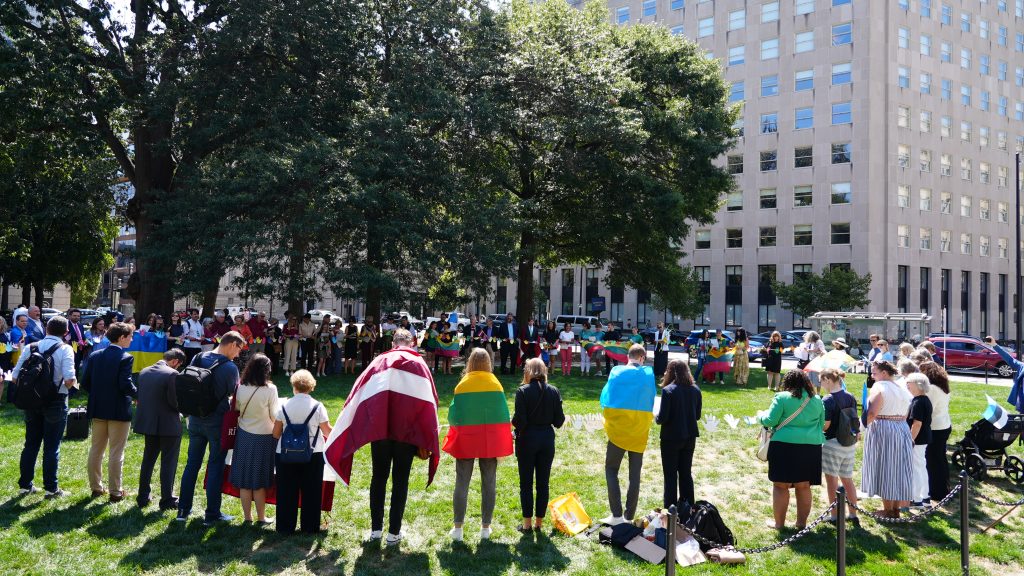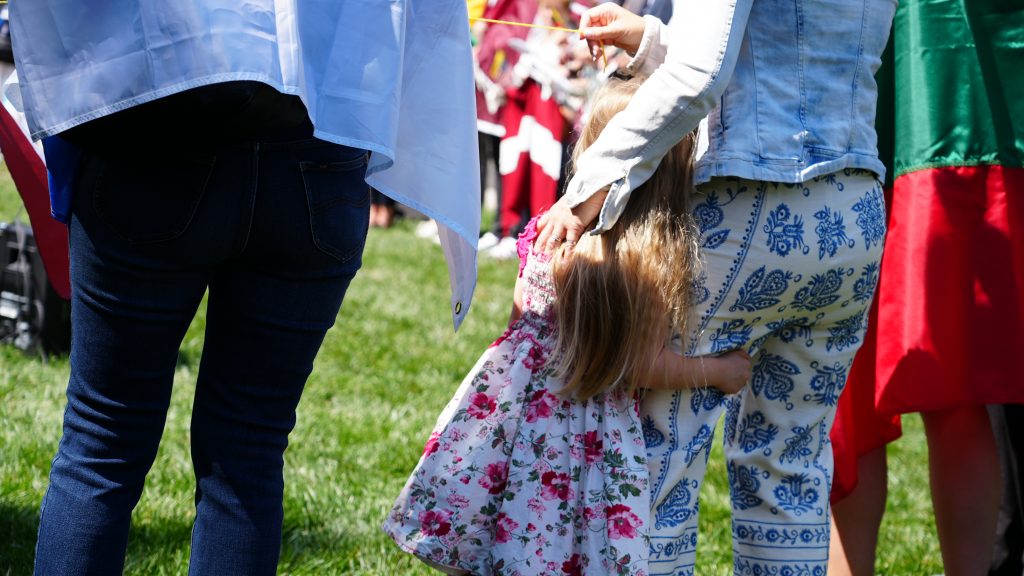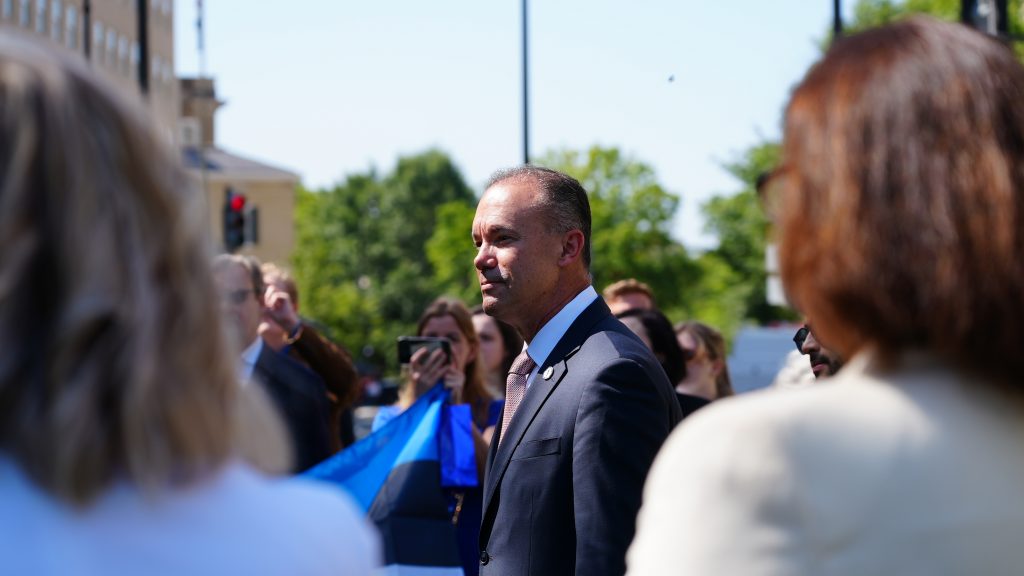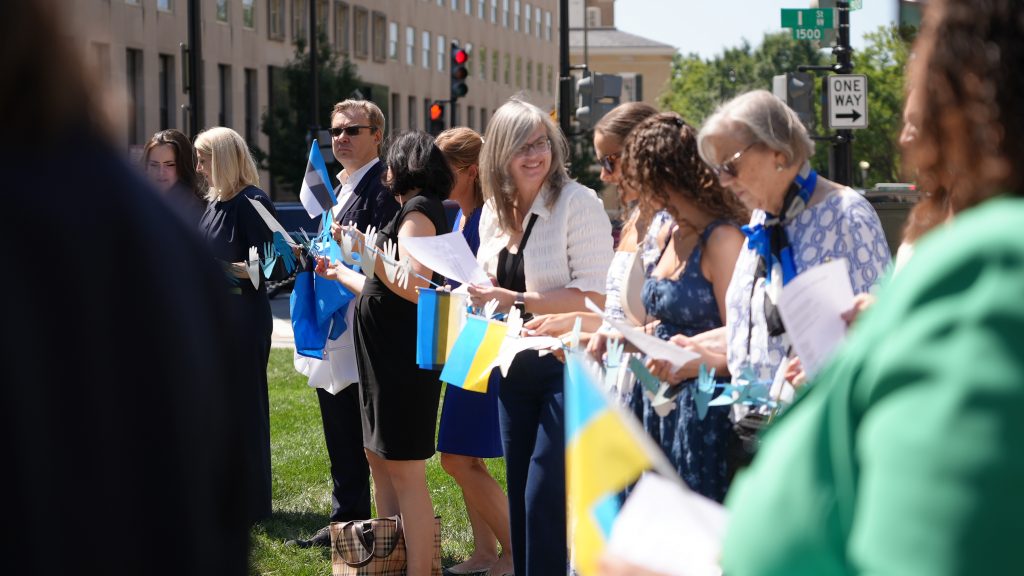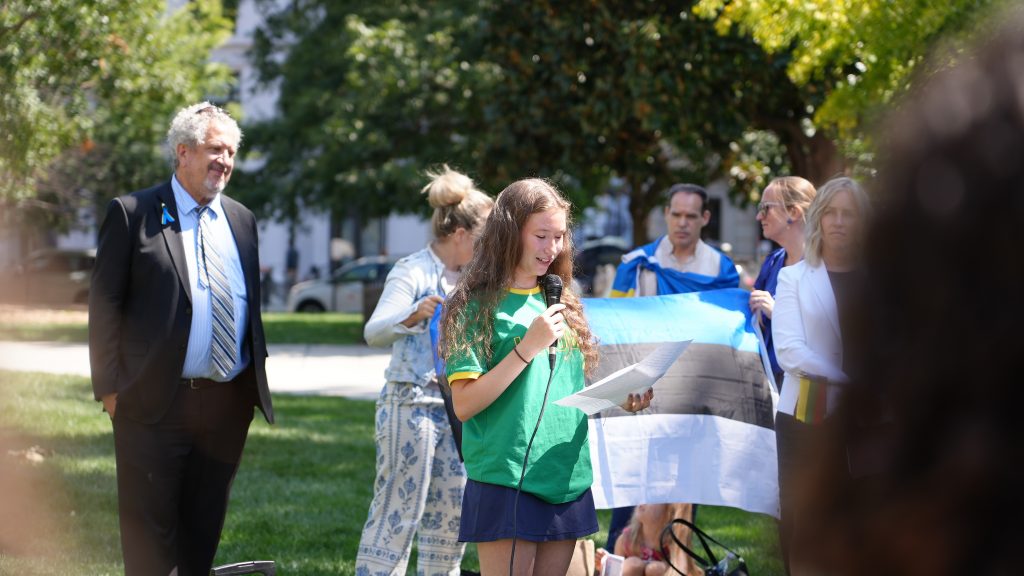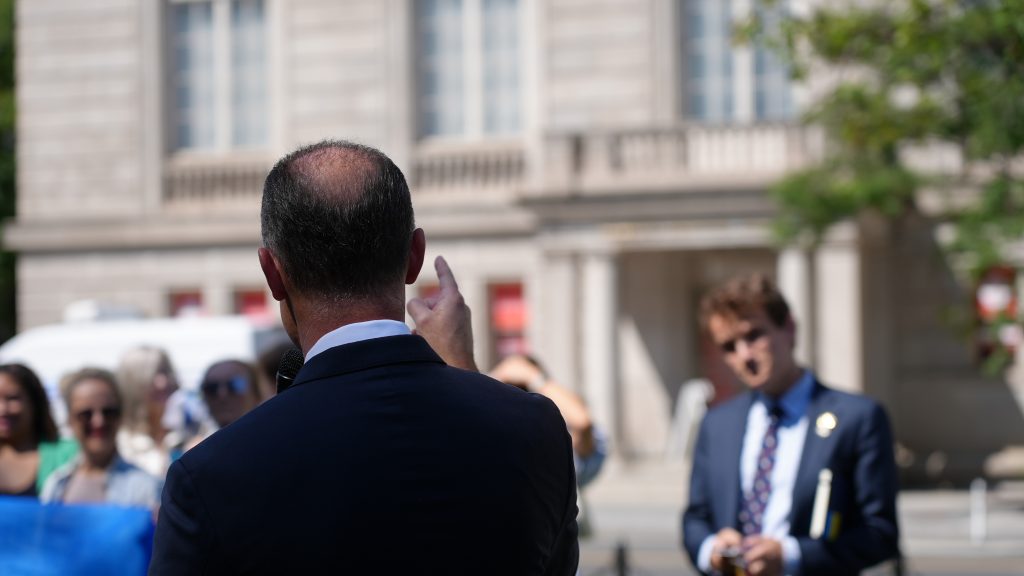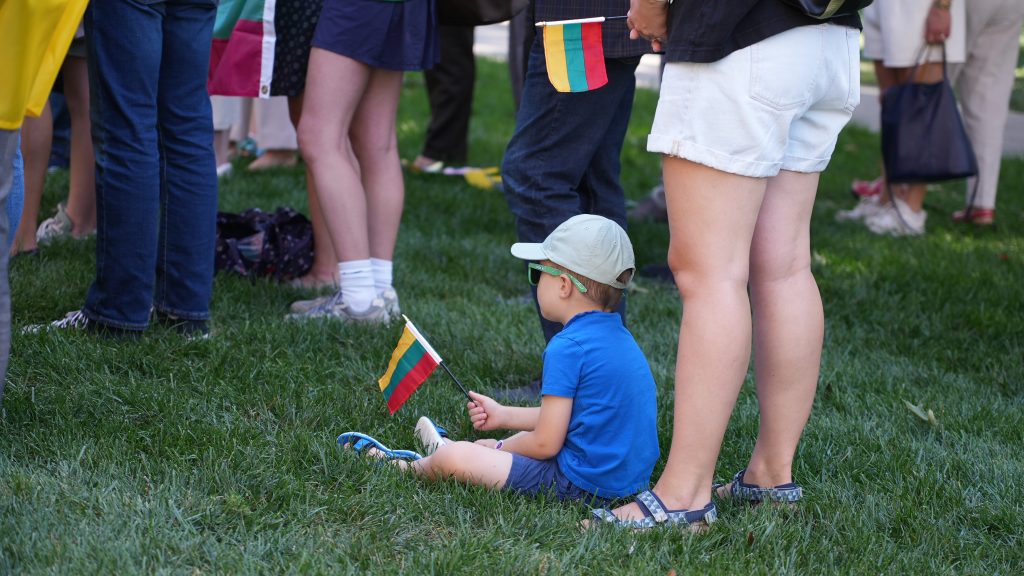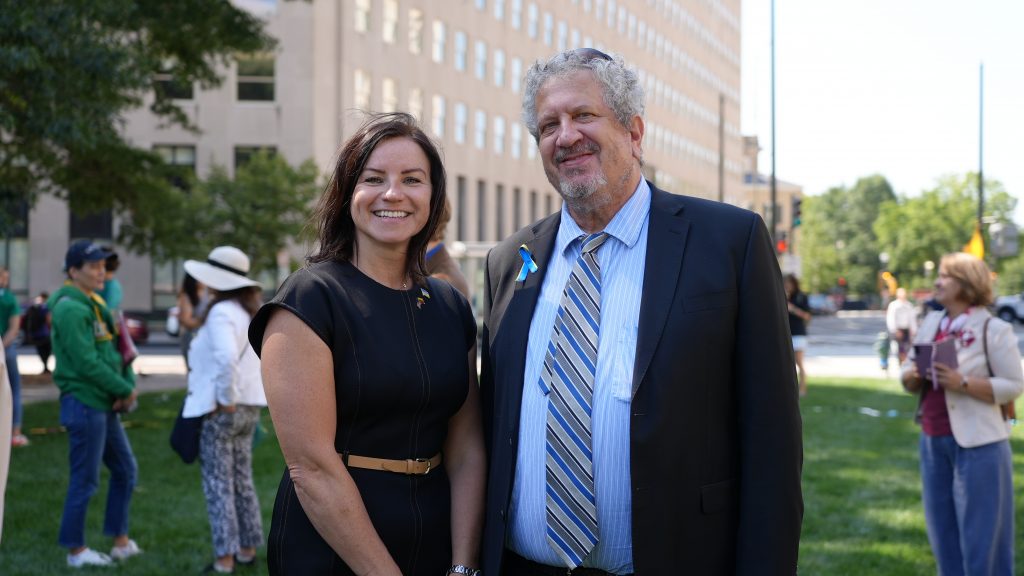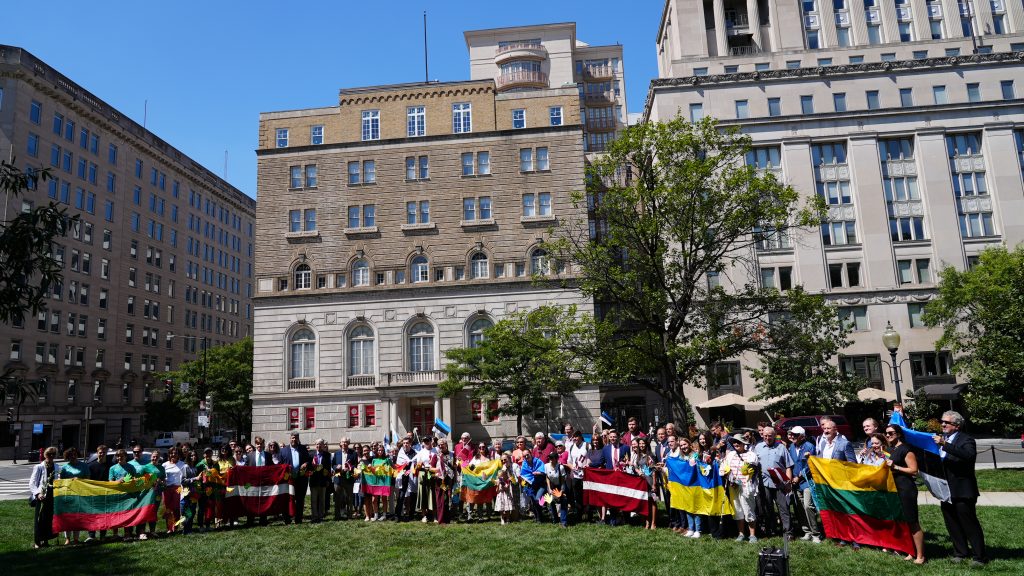Baltic Way 35
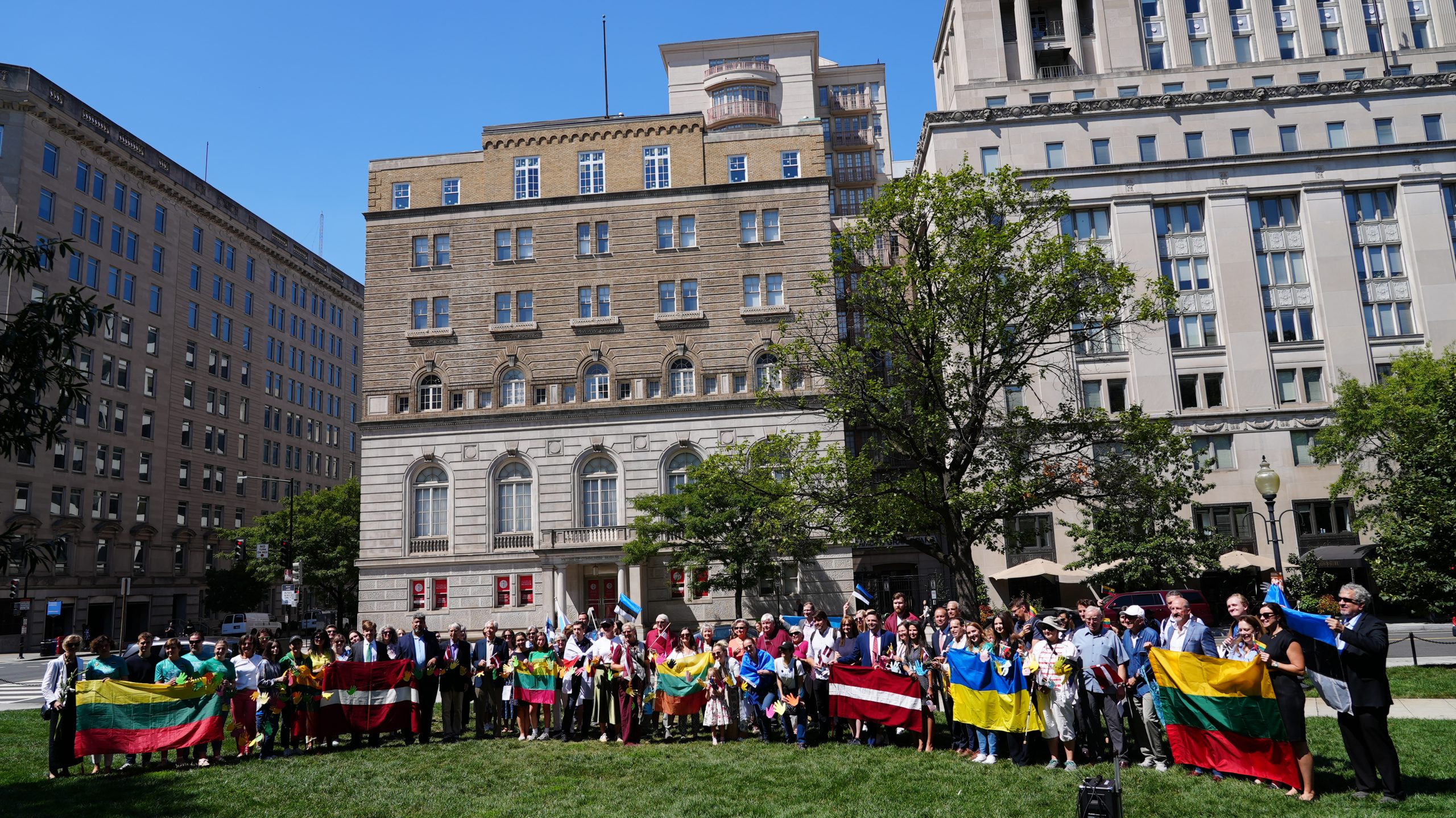
On August 23, the Victims of Communism Memorial Foundation, the Joint Baltic American National Committee, and the Embassies of Estonia, Latvia, and Lithuania gathered outside the Victims of Communism Museum to celebrate 35 years since the Baltic Way.
On August 23, 1989, almost two million people from Estonia, Latvia, and Lithuania joined hands along a distance of 370 miles in what became known as the Baltic Way. This human chain, linking one-fourth of the population across the capitals of Tallinn, Rīga, and Vilnius, formed in protest of Soviet occupation, on the 50th anniversary of the Molotov-Ribbentrop Pact. The fate of the Baltic nations was engulfed by oppression after a secret agreement between the Soviet Union and Nazi Germany in 1939 divided Europe and forcibly kept the Baltic countries behind the Iron Curtain. That terrible anniversary is now known as Black Ribbon Day.
It would not be until 1991 that all three Baltic nations would regain independence from Soviet occupation, after establishing their modern statehood in 1918. The peaceful, mass protest of the Baltic Way was a major milestone on their road to regaining freedom and an important memory in the fight against communism.
To learn more about the enduring legacy of the Molotov-Ribbentrop Pact, read the latest op-ed by VOC’s Dr. Eric Patterson and JBANC’s Karl Altau in Providence. To explore the Estonian perspective of the Baltic Way, read the latest article from VOC’s Mariliis Tõitoja, The Day Estonia Stood Still.
